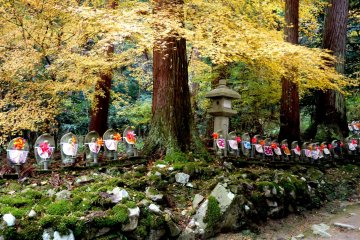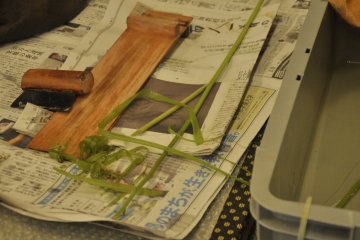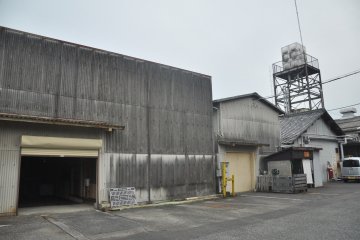
Windmill Ojizos at Kongorinji
Cathy CawoodThousands of Ojizo statues bearing brightly colored plastic windmills stand on either side of the path, and also in the forest at Kongorin-ji in Shiga Prefecture.

Kongorin-ji Temple is a peaceful place to relax, off the beaten path. If you want to venture outside the popular tourist spots of Kyoto and get away from the crowds, Kongorin-ji Temple in Shiga Prefecture is a wonderful choice. The Buddhist Temple was built in 741.
Kongorin-ji Temple is one of the three Koto Sanzan temples of the Tendai sect. The main temple, which was built in 1288, represents the Kamakura period (1192 to 1333) and is a designated national treasure. The gardens were laid out from the Azuchi Momoyama period (1573 to 1603) to the middle of the Edo period (1603 to 1868) and are well worth a visit for their beauty. There are also hundreds of statues of Jizo, the Buddhist patron god of children, the unborn, travelers and firefighters to marvel at.
The Jizo statues on the grounds of Kongorinji Temple are carefully adorned by faithful . Jizo are protectors of children, including the unborn, travelers, and firefighters.
These 500-year old gardens have been designated a Place of Scenic Beauty and it’s no wonder. Beautiful in any season, they’re especially popular during autumn.
Reach the temple by train to Inae Station, by taxi or by a shuttle bus that runs in November.

Thousands of Ojizo statues bearing brightly colored plastic windmills stand on either side of the path, and also in the forest at Kongorin-ji in Shiga Prefecture.

Enter Kongorinji in Shiga via a path that runs from the road to the pond garden between stone walls almost covered with thick moss and overhung by maples.

A teahouse and an Edo Era hall with beautiful door paintings of lotuses and dragons stand in a lovely pond garden at Kongorinji in Shiga Prefecture.

One of three Kotosanzan temples in Shiga Prefecture famous for wonderful color in autumn, Kongorinji's main hall and pagoda look beautiful surrounded by maple leaves.

The handmade textile products of the Omi-jofu Traditional Crafts Center, made using natural materials and traditional methods, are clearly a step above those items manufactured by machines.

Kirin Brewery Shiga Factory Tour take you on an incredible journey through the making of Japan’s top selling black tea beverage - Gogo no Kocha “Afternoon Tea”, and No.1 Beer - Kirin Lager Beer.

The Shiga Omi textil facrtory is the only factory in the Shiga region practicing authentic ways of textile production.